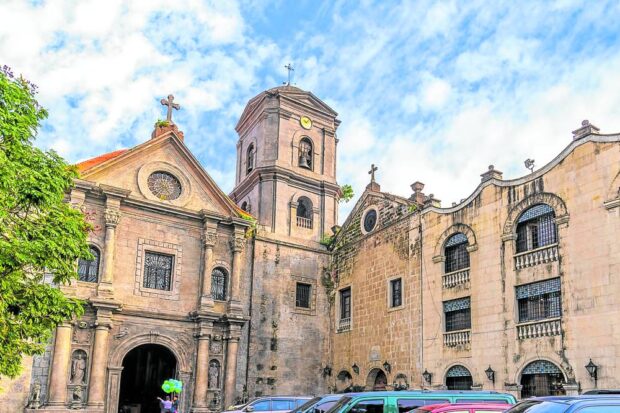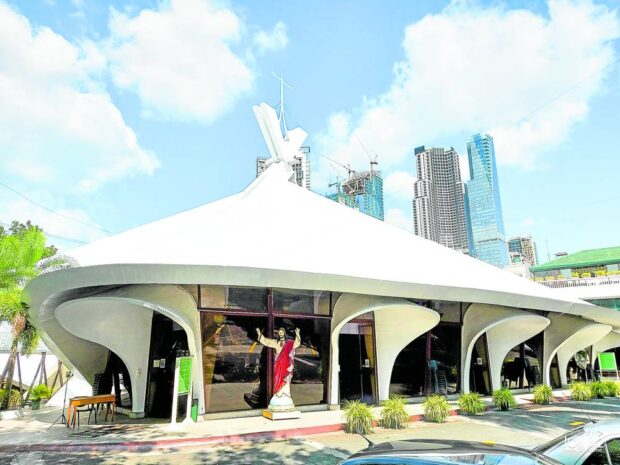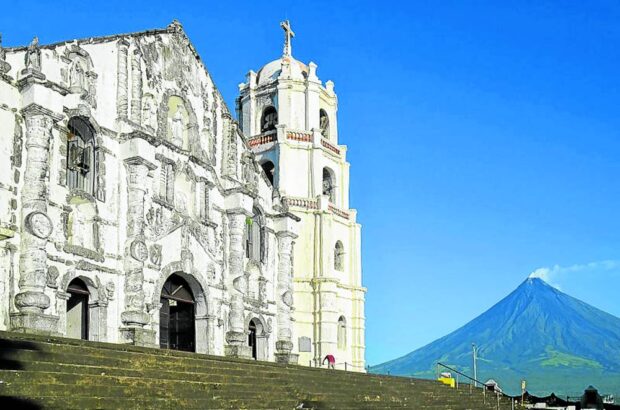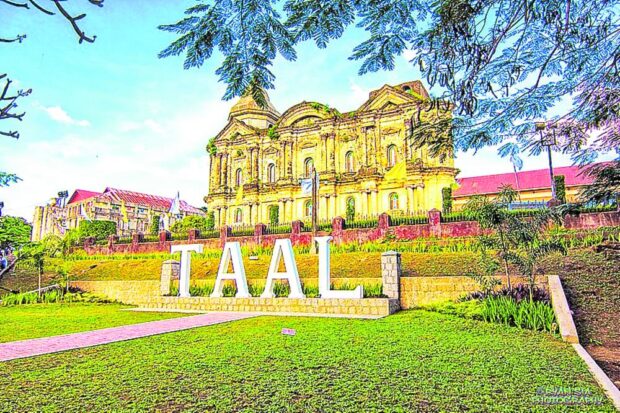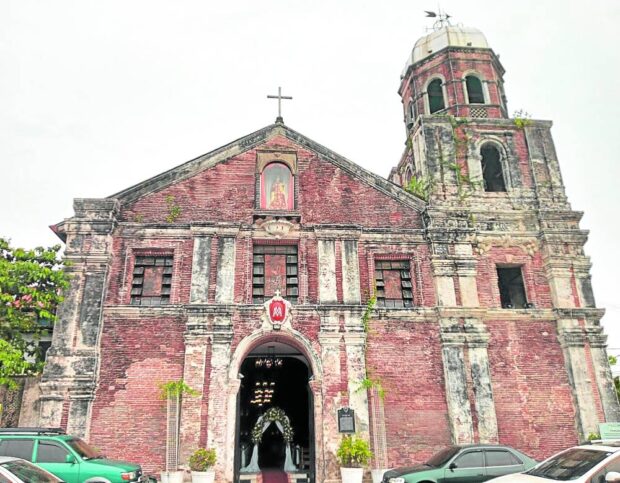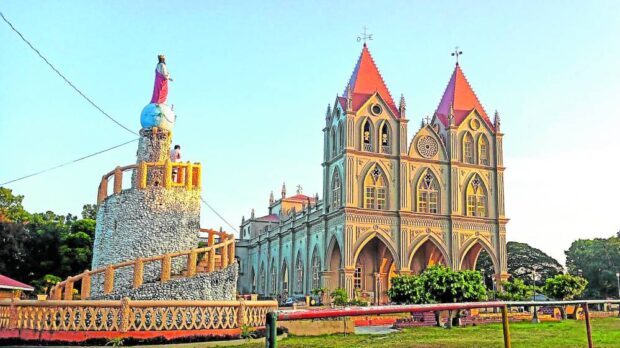9 heritage churches to go to for Simbang Gabi
Simbang Gabi is a special tradition that Filipino Catholics observe every December. Also known as Misa de Gallo, it involves a series of dawn Masses conducted for nine consecutive days up to Christmas Eve.
As a predominantly Catholic population, the Simbang Gabi is both a spiritual pilgrimage and an important part of Filipino culture that fosters faith and hope. Families and communities come together for this significant religious observance, marking the countdown to the birth of Jesus Christ.
Here are some churches around the Philippines—notable either for their beautiful architecture and design or for their cultural significance—that you can visit to hear Mass and make your Simbang Gabi tradition even more memorable.
San Agustin Church in the City of Manila
San Agustin Church, located inside the walled city of Intramuros in the City of Manila, is considered to be the oldest stone church in the country. The church structure we see today was completed in 1607 and was made primarily of adobe stones and lime mortar.
The church, relatively unchanged since its construction, is an important cultural and historical landmark in the Philippines. In 1993, the San Agustin Church was inscribed in the UNESCO World Heritage List as one of the four Baroque Churches of the Philippines. Its present shape is a fine example of Baroque architecture with ornate details and intricate designs. In addition, the facade features a mix of Baroque and Neoclassical styles.
The interior of the church also contains several distinct architectural features. Aside from the interior space of the church that boasts paintings of realistic imagery, the church is recognized as one of the few structures in the Philippines constructed with true barrel vaulting (also called boveda).
Article continues after this advertisementThe church also has a choir loft that is notable for its 68 carved molave stalls with fine inlay—made in 1606 under Fr. Miguel Serrano—and its extant narra wood construction, including its wooden railing. The choir loft also features a large, sculptural lectern imported from Macau in 1731. Extensive restoration has been done on the choir loft from 2015 to 2018.
Article continues after this advertisementSan Sebastian Church in the City of Manila
The Minor Basilica of San Sebastian in Quiapo, Manila is the only all-steel church or basilica in Asia since its construction in the 1880s. Its distinctive structure makes it one of the most iconic churches in the country and around the world. Completed in 1891, the San Sebastian Church is an example of the revival of Gothic architecture in the Philippines. In 1973, the church was declared as a National Historical Landmark by the Philippine government through a presidential decree.
Because the church was vulnerable to structural threats, in 1998 and 2010, the church was included in the World Monuments Watch, an independent organization devoted to protect the most treasured places in the world.
According to the World Monuments Fund, the San Sebastian Church was constructed by making use of 1,527 tons of steel manufactured in Binche, Belgium in 1886 and assembled over the course of two years by local craftsmen. The interior, designed by the school of Lorenzo Rocha, was decorated by an elaborate painted program: faux jasper and marble, and trompe l’oeils of angles, saints, medallions, and coats of arms. The church has 34 painted glass windows, all imported from the Henri Oidtmann Company of Germany.
St. Andrew the Apostle Parish in Makati City
The St. Andrew the Apostle Parish is an important heritage site in Makati City. Designed and built by National Artist for Architecture Leandro V. Locsin, its modern architectural facade stands out from other usual designs of churches.
The church structure draws inspiration from the story of its namesake, St. Andrew the Apostle, who was martyred on an X-shaped cross. The unique cross shape is seen in the form of the church’s peak, which is flanked by curved concrete walls, while the curved shell is made of thin-shell concrete, considered revolutionary during its time.
The parishioners commissioned another National Artist, Vicente Manansala, to create the copper cross that now hangs over the altar. To complete the look, a customized chandelier was suspended over the cross, reminiscent of a saintly halo.
The Church of Gesu in Quezon City
Located in the heart of the Ateneo de Manila Loyola Heights Campus, the Church of the Gesù was designed by Architects Jose Pedro Recio and Carmelo Casas in 2001. It is symbolic of both the Catholic faith and the community values of the school that hosts it. Due to its unique aesthetics and excellent design, it received the first Haligi ng Dangal award from the National Commission on Culture and the Arts (NCCA) in 2017.
The church structure is distinguished by its slanted roofs, white walls, and wide windows. According to the official website of Ateneo, its design conceptualization and construction were centered on the goal of representing the Jesuit vision in the Philippine context. The shape also alludes to the Bahay Kubo, a recognized icon of Philippine architecture.
Inside, the church features excellent acoustic design and unobstructed views of the altar. The holy water font, in particular, is interesting due to its stained glass enclosure and continuous flow design.
St. Alphonsus Mary de Liguori Parish Church in Makati City
The St. Alphonsus Mary de Liguori Parish Church, more commonly known as Magallanes Church, is notable for its eye-catching appearance and unique architectural design. From the outside, the roof structure of the church which consists of arches of different sizes that were layered next to each other, draws attention instantly.
Its current structure was rebuilt from what was saved when a big fire consumed the previous church. The new edifice retained the 28 concrete buttresses that survived from the original structure. New additions were added in the 13 roof vaults that are separated by glass windows. These vaults gradually increase in height until they reach the central peak, with the middle vault standing at 28 meters in height. The vaults were encased in unglazed clay tiles on the exterior, reducing heat gain in the building while the windows permit natural light and ventilation to run through the edifice.
The garden of the church also features a collection of sculptures that feature the Way of the Cross, the 14-step Catholic devotion that recounts the suffering of Christ on the day of his death. The works were pooled together by one of the parishioners, 2006 National Artist for Architecture Ildefonso Santos Jr., who also designed the curvilinear garden where the sculptures can be found.
Nuestra Señora de la Porteria Church in Daraga, Albay
The Nuestra Señora de la Porteria Church, commonly known as the Daraga Church, was declared a National Cultural Treasure by the National Museum in 2007. In 2008, the church was recognized with a Level II Historical marker by the National Historical Institute.
Built on top of a hill by the Franciscans in 1773, the Daraga Church is a sight to behold because of its rich Baroque church architecture and exterior made even more beautiful by passing time. The walls of Daraga Church, which were made primarily of volcanic rocks, remain intact and exhibit Baroque ornamentation. Religious images and carved foliage decorate the walls of the facade of the church and its gray and white color adds texture to its history. The Mayon Volcano being visible in the view of the church also adds to its majestic landscape.
Minor Basilica of Saint Martin of Tours in Taal, Batangas
The Taal Basilica, as it is more commonly known, is recognized as Asia’s largest Catholic Church which can accommodate 1,500 parishioners. Standing on a hilltop, the bell towers, the dome and gables are visible from different directions. The church was erected in 1575 but has been rebuilt and restored several times following earthquakes triggered by the active Taal volcano. The Taal Basilica is famous for its Baroque architecture and Trompe-l’oeil painted ceilings. It was declared a National Historical Landmark as a form of recognition of its contribution to Philippine history in 1986.
In 2020, architectural lighting designer Georgina “Mia” Protacio was tasked by the Taal parish to customize lighting systems that would create an elegant building at night, enhance an environment conducive to worship, and highlight symbolic details. The lighting design and the Christmas décor were offshoots of the basilica’s recent restoration by the National Historical Commission of the Philippines.
St. Mary Magdalene Church in Kawit, Cavite
The St. Mary Magdalene Church was built in 1737. It is one of the oldest churches in Cavite and has historical and cultural significance in Kawit. It was where Gen. Emilio Aguinaldo was baptized and his birth certificate was kept on the left side of the altar. During the galleon trade, there used to be a port here and the church used to serve as a lighthouse for the galleons.
The structure of the church is a modest two-level Baroque façade with minimal decorative elements. The main entrance is a semicircular arch topped by the seal of St. Mary Magdalene, its patroness. The church has a single nave whose sides have a total of 14 sets of windows, each with a small stained-glass depicting the 14 Stations of the Cross. Each side of the main altar has larger stained-glass windows, one depicting the Resurrection of Christ and the other showing Jesus Christ at different stages of his life.
Every Christmas Eve, Kawit celebrates the Maytinis Festival, a religious procession of “carrozas” (carriages) depicting Biblical characters and scenes such as the journey of Joseph and a pregnant Mary in search for an inn and the birth of Jesus Christ. During this festival, the St. Mary Magdalene Church becomes the central point of the Maytinis as the second is the celebration of the Holy Mass, the most important part, includes the Liturgy of the Eucharist.
San Vicente Ferrer Parish in Calape, Bohol
The church and town of Calape, which honors St. Vincent Ferrer as patron saint, were founded in 1802. The church structure of San Vicente Ferrer as known today began construction in 1933 and was completed in 1954. It is a neo-gothic style church that is unique and eye-catching in design. The parish has been dubbed as the “epitome of Bohol Gothic” which can be seen inside the church, especially in the altar and confessional. Based on history, the Calape Church was based on the design of Santo Domingo Church in Intramuros. Also located in the bell tower of the church is the historical bell in 1690 assigned to St. John the Baptist from a church in Cebu.
In May 2023, the church complex of the San Vicente Ferrer Parish was formally declared a National Cultural Treasure (NCT), the ninth church in the province to be declared as such by the National Museum of the Philippines. It was declared as an NCT pursuant to Museum Declaration No. 59-2020.
Sources: Inquirer Archives, National Historical Commission of the Philippines, nationalmuseum.gov.ph, cbcpnews.net, wmf.org, ateneo.edu, scmp.com, philippinefaithandheritagetours.com, Philippine News Agency
